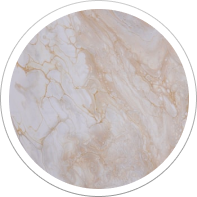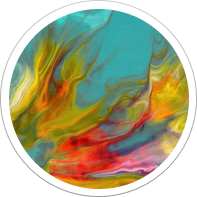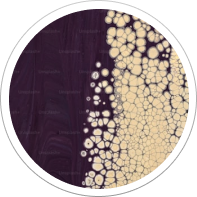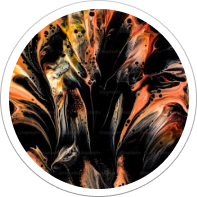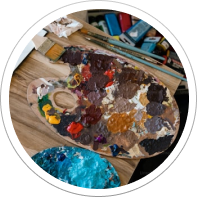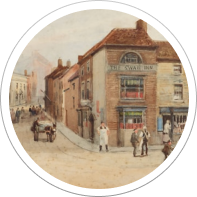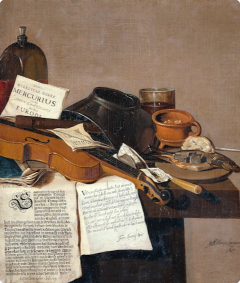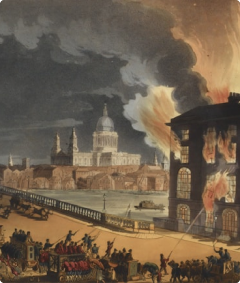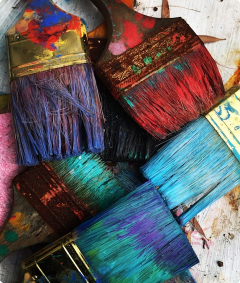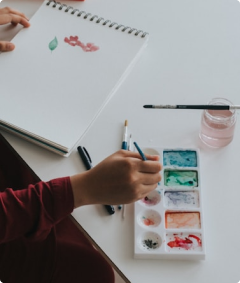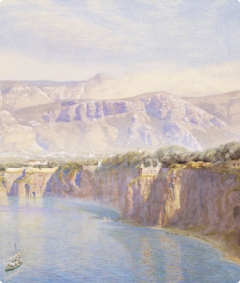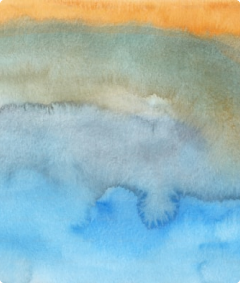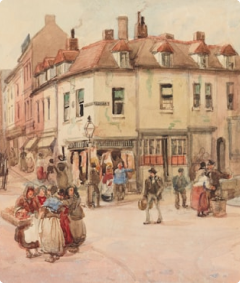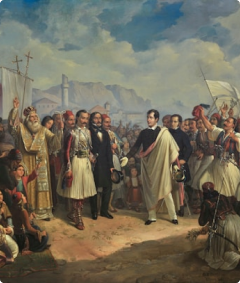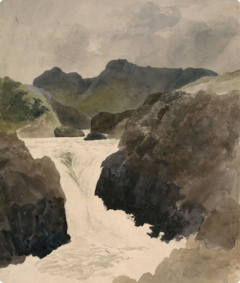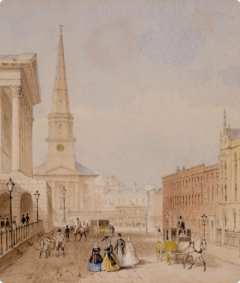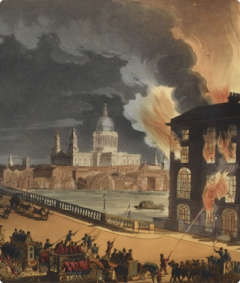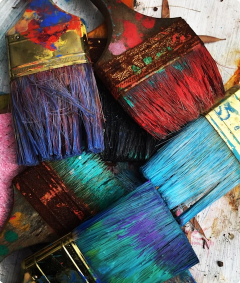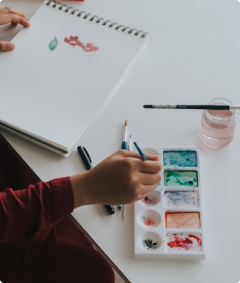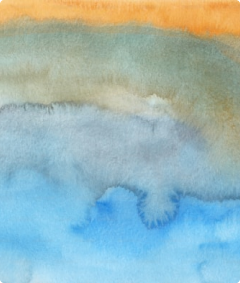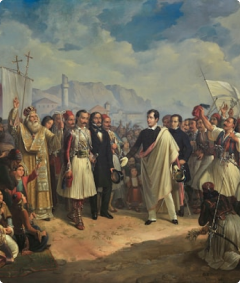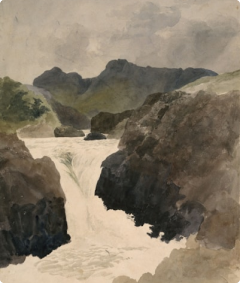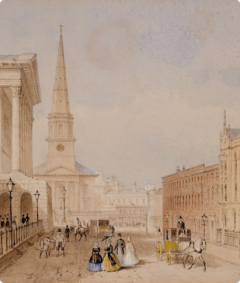
Top Seller
Canvas Prints & Photo Tiles, Wall Art from Jodello
Transform your space with Jodello’s canvas prints, photo tiles, and custom wall art. Turn memories and designs into stunning decor that reflects your unique style.
Get Started
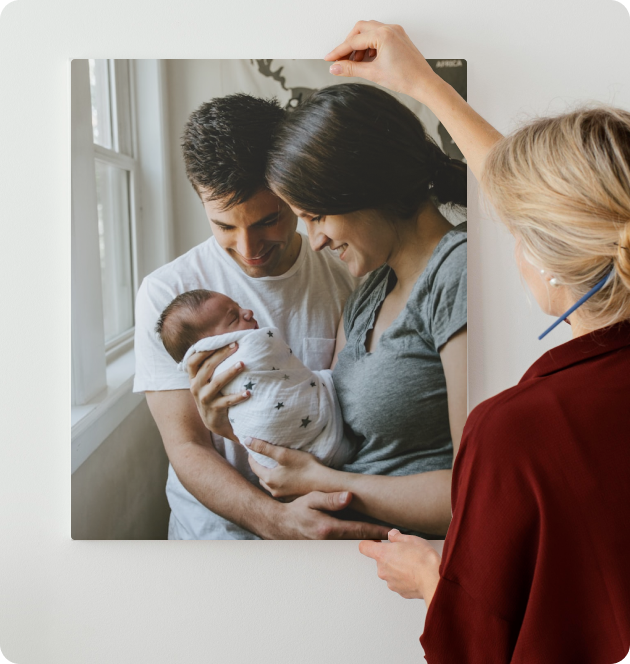






How It Works:
Transform your space with Jodello’s canvas prints, photo tiles, and custom wall art.

1. Add Photos
Upload your favorite moments.

2. We Deliver
Get your custom prints fast.

3. You Stick
Peel, stick, and transform your walls effortlessly.

Featured Categories
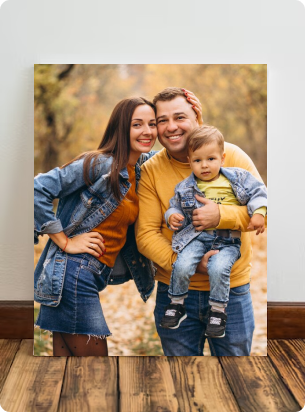
Your Cherished Moments, Beautifully Displayed
Transform your space with top-quality, customizable canvas prints. From cherished moments to stunning artwork, Jodello offers a seamless way to craft beautiful pieces that showcase your unique taste.
Get Started
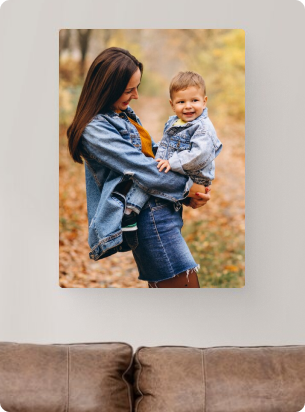
Why You'll Love Jodello

Seamless Installation
Easy-to-mount prints, no tools needed

No Damage, No Hassle
Sticks securely, removes cleanly

Endlessly Customizable
Designs that fit your style effortlessly
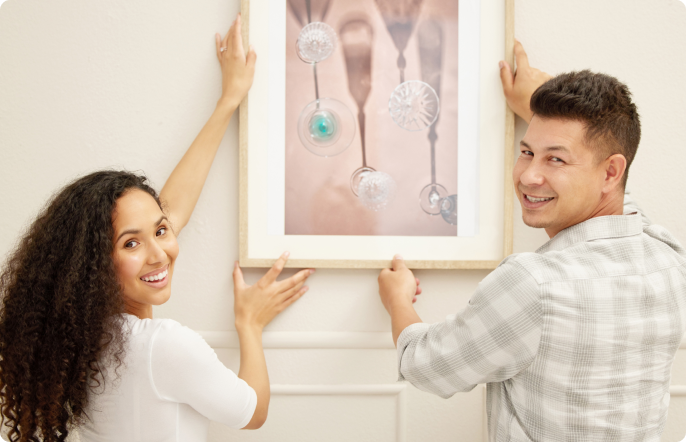
Customer Testimonials
Discover the conversations happening around our brand and see what our customers are saying about their experiences with us.
"I recently purchased a stunning canvas from Jodello, and I couldn't be happier with my choice! The vibrant colors and exquisite detail have truly transformed my living room. “


Liam Carter
"I recently purchased a stunning canvas from Jodello, and I couldn't be happier with my choice! The vibrant colors and exquisite detail have truly transformed my living room. “


Liam Carter
"I recently purchased a stunning canvas from Jodello, and I couldn't be happier with my choice! The vibrant colors and exquisite detail have truly transformed my living room. “


Liam Carter
FAQs
Easy-to-mount prints, no tools needed
Easy-to-mount prints, no tools needed
Easy-to-mount prints, no tools needed
Easy-to-mount prints, no tools needed
Easy-to-mount prints, no tools needed
Easy-to-mount prints, no tools needed
Easy-to-mount prints, no tools needed
Easy-to-mount prints, no tools needed
Premium Framed Glass Photos & Pictures: Discovering Superior Quality Through Glass Versus Traditional Options
The realm of photo printing has evolved dramatically over recent decades, transforming from simple paper-based reproductions into sophisticated artistic expressions utilizing diverse materials and revolutionary printing processes. Modern photographers, interior designers, and art enthusiasts now face an abundance of choices when selecting the perfect medium for displaying their cherished memories and artistic creations. Among the myriad options available, including traditional framed prints, contemporary acrylic displays, industrial metal surfaces, rustic canvas textures, and innovative glass substrates, each material offers distinct characteristics that profoundly influence both aesthetic appeal and longevity.
Understanding the nuanced differences between these printing mediums becomes crucial for anyone seeking to create lasting visual impact while preserving precious memories or showcasing professional photography. The decision extends far beyond mere aesthetics, encompassing considerations of durability, color reproduction, environmental sustainability, display versatility, and long-term value retention. This comprehensive exploration delves deep into the intricate world of photo printing materials, examining each option through multiple lenses to provide clarity in an increasingly complex marketplace.
The significance of material selection cannot be overstated, as it fundamentally determines how viewers perceive and interact with photographic content. From the intimate warmth of a family portrait to the dramatic grandeur of landscape photography, the chosen substrate acts as the silent narrator that either enhances or diminishes the intended emotional resonance. Contemporary printing technologies have revolutionized our ability to reproduce images with unprecedented fidelity, yet the material foundation remains the critical factor that elevates ordinary photographs into extraordinary artistic statements.
Revolutionary Glass Printing Technology: Redefining Photographic Excellence
Glass printing represents a paradigm shift in photographic reproduction, offering an unprecedented combination of visual clarity, color vibrancy, and contemporary elegance that transforms ordinary images into extraordinary artistic statements. This innovative process involves direct application of specialized pigment-based inks onto the reverse surface of precision-engineered glass panels, creating a seamless integration between substrate and image that eliminates the traditional barriers found in conventional printing methods.
The manufacturing process begins with carefully selected glass sheets that undergo rigorous quality inspection to ensure uniform thickness, optical clarity, and structural integrity. These panels receive specialized surface preparation treatments that create optimal ink adhesion while maintaining the pristine transparency that makes glass printing so visually striking. The printing itself utilizes state-of-the-art digital technologies that deposit ultra-fine pigment particles with microscopic precision, building up color layers that achieve remarkable depth and saturation.
Unlike traditional printing methods that rely on paper fibers or synthetic substrates that can interfere with color reproduction, glass provides an inert, chemically stable foundation that preserves color integrity indefinitely. The transparent nature of glass allows light to interact with printed images in unique ways, creating luminous effects that enhance color depth and visual impact. This optical phenomenon occurs because light passes through the glass substrate before reflecting off the printed surface, creating an almost three-dimensional quality that makes images appear to glow from within.
The durability advantages of glass printing extend far beyond simple longevity, encompassing resistance to environmental factors that commonly degrade other printing materials. Humidity, temperature fluctuations, and atmospheric pollutants that can cause fading, discoloration, or physical deterioration in paper-based prints have minimal impact on properly executed glass prints. The non-porous nature of glass prevents moisture infiltration, while the chemical stability of modern pigment-based inks ensures color permanence under normal display conditions.
Environmental sustainability represents another compelling advantage of glass printing technology. Unlike synthetic materials that contribute to plastic waste or paper products that require resource-intensive manufacturing processes, glass offers recyclable properties that align with contemporary environmental consciousness. The longevity of glass prints also reduces replacement frequency, contributing to reduced waste generation over the product lifecycle.
Installation and display characteristics of glass prints provide remarkable versatility for various interior design applications. The inherently flat profile allows for flush wall mounting that creates a seamless integration with architectural elements, while the absence of protruding frames maintains clean, uncluttered visual lines. This minimalist aesthetic particularly appeals to contemporary design sensibilities that emphasize simplicity, elegance, and spatial harmony.
The weight distribution of properly designed glass prints ensures secure mounting while avoiding the excessive bulk that characterizes many alternative printing materials. Modern mounting systems utilize sophisticated hardware that distributes weight evenly across attachment points, providing reliable support while maintaining the clean aesthetic that makes glass printing so appealing. The smooth, finished edges of quality glass prints eliminate sharp corners or rough surfaces that might pose safety concerns in high-traffic areas.
Traditional Framed Photography: Navigating Complexity and Limitation Challenges
Traditional framed photography remains deeply rooted in photographic history, yet modern practitioners increasingly recognize the inherent complexities and limitations that characterize this conventional approach to image display. The multi-layered process begins with critical decisions regarding paper selection, involving considerations of texture, weight, finish, and chemical composition that significantly influence final image quality and longevity expectations.
Paper substrate selection alone presents numerous variables that can dramatically affect photographic reproduction quality. Fiber-based papers offer archival properties but require specialized handling and processing, while resin-coated alternatives provide convenience at the expense of potential longevity concerns. Surface textures ranging from glossy to matte create different visual effects and reflection characteristics that must align with intended display environments and lighting conditions.
The printing phase introduces additional complexity layers, as different paper types respond uniquely to various ink formulations and printing technologies. Dye-based inks provide vibrant colors but may lack longevity, while pigment-based alternatives offer superior fade resistance but sometimes sacrifice color gamut. The interaction between paper chemistry and ink composition can produce unexpected results, requiring extensive testing and calibration to achieve optimal outcomes.
Frame selection represents perhaps the most challenging aspect of traditional photo display, involving aesthetic, protective, and practical considerations that must harmonize effectively. Frame materials ranging from natural wood to synthetic composites each offer distinct advantages and limitations. Wood frames provide timeless elegance but may suffer from expansion and contraction with humidity changes, potentially affecting print positioning over time. Metal frames offer dimensional stability but can create thermal conductivity issues in environments with significant temperature variations.
The glazing component of framed displays introduces another layer of complexity, with choices between standard glass, UV-protective glass, acrylic alternatives, and specialized museum-quality glazing materials. Each option affects image visibility, color reproduction, and protection levels while contributing to overall cost and weight considerations. Standard glass provides clarity but offers minimal UV protection, while specialized glazing materials enhance protection at significantly increased expense.
Matting decisions further complicate the framing process, requiring careful consideration of color, texture, and proportional relationships between image size and display area. Acid-free matting materials prevent chemical deterioration but command premium pricing, while standard matting options may compromise long-term preservation goals. The cutting precision required for professional matting often necessitates specialized equipment and expertise, adding cost and complexity to the overall process.
Assembly procedures demand meticulous attention to dust elimination, proper alignment, and secure fastening while avoiding pressure points that might damage the print surface. The sealed environment created within frames can trap contaminants that gradually degrade image quality, particularly in environments with high humidity or temperature fluctuations. Regular maintenance becomes necessary to preserve optimal display conditions, requiring periodic disassembly and cleaning procedures.
Cost considerations for quality framed displays often exceed initial expectations, particularly when utilizing archival materials and professional assembly services. Custom framing frequently involves multiple consultations, measurement procedures, and fitting appointments that extend project timelines considerably. The cumulative expense of premium paper, professional printing, quality framing materials, and expert assembly can quickly escalate beyond budget constraints for many photography enthusiasts.
Acrylic Display Systems: Evaluating Modern Synthetic Alternatives
Acrylic printing systems have gained popularity among contemporary photographers seeking alternatives to traditional framing while avoiding the perceived fragility of glass substrates. These synthetic polymer-based displays utilize thermoplastic materials that can be molded, shaped, and printed upon using various technologies ranging from direct digital printing to sublimation transfer processes.
The manufacturing process for acrylic prints typically begins with industrial-grade polymer sheets that undergo surface preparation to enhance ink adhesion and optical clarity. Unlike glass printing where inks are applied to the reverse surface, acrylic printing often involves direct surface application or subsurface mounting techniques that create different visual characteristics. The polymer structure allows for greater thickness variations, enabling three-dimensional effects and sculptural qualities that distinguish acrylic prints from flatter alternatives.
Optical properties of acrylic materials differ significantly from glass, despite superficial similarities in transparency and clarity. The refractive index of acrylic polymers creates subtle but noticeable differences in how light interacts with printed images, often producing slightly different color rendering characteristics compared to glass substrates. These differences become more pronounced under varying lighting conditions, particularly when comparing natural daylight illumination to artificial lighting sources.
Structural characteristics of acrylic prints present both advantages and limitations that potential users must carefully evaluate. The inherent flexibility of polymer materials provides superior impact resistance compared to glass, making acrylic prints suitable for high-traffic environments where accidental contact might occur. However, this same flexibility can create challenges in maintaining perfectly flat display surfaces, particularly with larger print sizes that may exhibit slight bowing or warping over time.
Surface hardness represents a significant consideration when evaluating acrylic printing options. While acrylic materials resist catastrophic failure better than glass, they are substantially more susceptible to surface scratching and abrasion damage during handling, cleaning, or routine maintenance. The polymer surface readily shows fingerprints, dust accumulation, and minor scratches that can gradually diminish visual clarity and aesthetic appeal.
Chemical stability of acrylic materials varies considerably based on polymer formulation and manufacturing quality. Lower-grade acrylic materials may exhibit yellowing, brittleness, or optical degradation when exposed to prolonged UV radiation or extreme temperature conditions. Premium acrylic formulations incorporate UV stabilizers and impact modifiers that improve longevity, but these enhanced materials command significantly higher pricing.
Weight considerations favor acrylic prints in situations where mounting limitations or structural concerns influence material selection. The lower density of polymer materials creates lighter displays that require less robust mounting hardware, potentially reducing installation complexity and costs. However, the perceived value and premium aesthetic qualities often favor glass alternatives despite weight advantages.
Environmental implications of acrylic printing deserve careful consideration, particularly given growing awareness of plastic waste and sustainability concerns. While some manufacturers utilize recycled polymer content or implement recycling programs for acrylic prints, the overall environmental footprint of synthetic materials generally exceeds that of glass alternatives. The production process for acrylic materials involves petroleum-based feedstocks and energy-intensive polymerization reactions that create larger carbon footprints compared to glass manufacturing.
Metal Substrate Photography: Industrial Aesthetics Meet Contemporary Display
Metal printing technology has emerged as a distinctive option for photographers seeking industrial aesthetics combined with exceptional durability characteristics. This printing method typically utilizes aluminum sheets as the base substrate, employing sublimation transfer processes that infuse dyes directly into the metal surface through heat and pressure application.
The sublimation process begins with specialized dye-based inks printed onto transfer papers using high-resolution digital printers. These printed transfers are then positioned against prepared aluminum surfaces and subjected to controlled heat and pressure that causes the dyes to vaporize and penetrate the metal substrate. Upon cooling, the dyes solidify within the aluminum structure, creating permanent image integration that resists surface wear and environmental degradation.
Aluminum substrate preparation involves multiple surface treatment stages that influence final image quality and adhesion characteristics. Anodizing processes create controlled oxidation layers that enhance dye reception while providing improved corrosion resistance. The micro-textural properties of anodized aluminum can be adjusted to achieve different surface finishes ranging from high-gloss mirror-like appearances to subtle matte textures that reduce reflection and glare.
Color reproduction characteristics of metal printing differ markedly from other substrates due to the inherent reflective properties of aluminum surfaces. The metallic background can enhance certain color ranges while potentially shifting others, creating unique aesthetic effects that some photographers embrace while others find limiting. Silver tones and cool color palettes often receive enhancement from aluminum substrates, while warm tones may appear cooler or less saturated than intended.
Durability advantages of metal prints make them particularly suitable for challenging environments where moisture, temperature extremes, or physical contact might damage other materials. The corrosion resistance of properly treated aluminum substrates enables outdoor display applications that would quickly destroy paper-based prints or damage other materials. Industrial and commercial environments often favor metal prints for their ability to withstand cleaning procedures and environmental stresses.
Surface reflection characteristics require careful consideration during the design and installation phases of metal print projects. The inherently reflective nature of aluminum can create viewing challenges under certain lighting conditions, potentially requiring strategic positioning or specialized lighting arrangements to optimize visual accessibility. Anti-reflective coatings can mitigate these issues but may alter color reproduction characteristics and add to overall project costs.
Mounting and installation procedures for metal prints typically involve specialized hardware designed to accommodate the thermal expansion properties of aluminum substrates. Temperature-induced dimensional changes can affect mounting alignment over time, particularly in environments with significant seasonal temperature variations. Professional installation often becomes necessary to ensure proper mounting and long-term stability.
The industrial aesthetic created by metal prints appeals to contemporary design trends that emphasize raw materials, minimalist aesthetics, and modern architectural elements. This visual characteristic can complement modern interior designs while potentially clashing with traditional or warm decorative themes. The decision to utilize metal printing should align with overall design objectives and aesthetic preferences.
Canvas Printing Traditions: Artistic Heritage Meets Modern Limitations
Canvas printing maintains strong connections to traditional artistic practices while adapting to contemporary photographic reproduction needs through digital printing technologies. This time-honored medium utilizes fabric substrates that range from traditional linen and cotton blends to modern synthetic materials designed specifically for digital printing applications.
Traditional canvas materials derive from natural fiber sources that provide distinctive textural characteristics and organic aesthetic qualities. Linen canvas offers the finest texture and archival properties, commanding premium pricing while delivering superior longevity and professional-grade results. Cotton canvas provides more affordable alternatives while maintaining reasonable quality standards for most applications. However, natural fiber canvases require careful handling and environmental control to prevent degradation, stretching, or dimensional instability.
Modern synthetic canvas materials attempt to replicate traditional textile characteristics while addressing some durability and consistency limitations of natural fibers. Polyester blends and vinyl-based substrates offer improved moisture resistance and dimensional stability, though they may sacrifice some of the organic aesthetic qualities that make traditional canvas appealing. The choice between natural and synthetic canvas materials involves balancing aesthetic preferences against practical considerations and budget constraints.
The printing process for canvas substrates utilizes specialized ink formulations designed to penetrate fabric fibers while maintaining color vibrancy and adhesion properties. Water-based inks provide environmental advantages and fade resistance, while solvent-based alternatives may offer superior color gamut and adhesion characteristics. The porous nature of canvas materials affects ink absorption patterns, potentially creating slight color variations and texture interactions that influence final image appearance.
Stretching and mounting procedures for canvas prints require specialized techniques that ensure proper tension distribution while avoiding damage to printed surfaces. Professional stretching involves precise measurement, gradual tension application, and careful corner management to create smooth, wrinkle-free displays. Improper stretching can create permanent creases, uneven surfaces, or premature wear that significantly diminishes aesthetic appeal and longevity.
Gallery wrapping techniques allow canvas prints to extend around frame edges, creating frameless displays that showcase images without traditional border constraints. This approach requires careful image planning to ensure essential content remains visible on the front surface while wrapped portions contain appropriate content or neutral colors. The three-dimensional quality created by gallery wrapping can enhance certain image types while potentially detracting from others.
Protective considerations for canvas prints encompass UV protection, moisture control, and physical damage prevention. The organic nature of canvas materials makes them particularly susceptible to environmental degradation, requiring controlled display conditions to maintain long-term integrity. UV-protective sprays or coatings can enhance fade resistance but may alter surface texture or color characteristics.
Cost-effectiveness positions canvas printing as an accessible option for budget-conscious consumers seeking large-format displays without premium material expenses. However, the apparent affordability can be misleading when considering long-term replacement costs due to degradation or damage. Professional-quality canvas printing with archival materials and proper mounting can approach costs comparable to other premium printing options.
Surface Quality Analysis: Comparing Texture, Clarity, and Visual Impact
Surface quality evaluation requires systematic analysis of multiple factors that collectively determine the visual success and aesthetic appeal of different printing materials. Texture characteristics, optical clarity, color reproduction accuracy, and reflection management each contribute to the overall viewing experience and long-term satisfaction with printed photographic displays.
Texture analysis begins with microscopic examination of surface irregularities that influence light reflection patterns and tactile qualities. Canvas materials inherently possess pronounced textile weaves that create distinctive visual patterns overlaying printed images. While this texture can enhance certain artistic styles or vintage aesthetics, it simultaneously reduces fine detail visibility and creates visual interference that may detract from sharp photographic content.
Glass surfaces achieve virtually perfect smoothness through precision manufacturing processes that eliminate microscopic irregularities capable of disrupting light transmission or reflection patterns. This optical perfection allows for maximum detail reproduction and color accuracy without textural interference. The absence of surface texture enables viewers to focus entirely on photographic content without distraction from substrate characteristics.
Acrylic materials fall between glass and canvas in terms of surface quality, offering smoother finishes than textiled surfaces while potentially exhibiting slight manufacturing variations or polymer-induced optical effects. The molding processes used in acrylic manufacturing can occasionally introduce surface imperfections or stress patterns that become visible under certain lighting conditions.
Metal substrates present unique textural characteristics that depend heavily on surface preparation and finishing processes. Brushed aluminum creates distinctive linear patterns that can complement certain image types while potentially interfering with others. Smooth metal finishes approach glass-like clarity but may retain slight graining or manufacturing marks that influence visual perception.
Clarity assessment involves evaluation of optical transmission properties, color neutrality, and light scattering characteristics that affect image sharpness and contrast reproduction. Glass materials excel in optical transmission, allowing maximum light passage without significant absorption or scattering. This transparency creates optimal conditions for color accuracy and contrast preservation.
Color reproduction analysis examines how different substrates influence chromatic accuracy, saturation levels, and tonal range reproduction. Glass substrates provide neutral foundations that preserve original color values without introducing color casts or saturation shifts. The inert nature of glass prevents chemical interactions that might alter color appearance over time.
Reflection management becomes critical in determining viewing angle flexibility and optimal lighting conditions for different printing materials. Glass surfaces can be treated with anti-reflective coatings that minimize unwanted reflections while preserving optical clarity. Canvas materials naturally diffuse reflections through their textured surfaces but may sacrifice image sharpness in the process.
Visual impact assessment considers the immediate aesthetic impression created by different printing materials and their ability to enhance or complement photographic content. Glass prints consistently deliver striking visual presence through their combination of clarity, color vibrancy, and contemporary elegance. The absence of visual barriers between viewer and image creates intimate connection that enhances emotional engagement with photographic content.
Durability and Longevity: Long-term Performance Across Material Types
Durability evaluation encompasses multiple factors that determine how different printing materials withstand environmental stresses, physical handling, and time-related degradation processes. Understanding these characteristics becomes essential for making informed decisions about material selection based on intended use patterns, display environments, and long-term value expectations.
Environmental stress resistance varies dramatically among different printing substrates, with glass materials demonstrating superior performance across multiple challenge categories. Humidity exposure, temperature fluctuations, and atmospheric pollutants that readily damage paper-based prints have minimal impact on properly manufactured glass displays. The non-porous nature of glass prevents moisture infiltration that can cause warping, discoloration, or mold development in organic materials.
UV radiation resistance represents a critical factor in long-term color preservation, particularly for displays in naturally lit environments or outdoor applications. Glass substrates combined with UV-stable pigment inks provide exceptional protection against photochemical degradation that causes fading in many traditional printing materials. The glass layer itself filters harmful UV wavelengths while the protected ink layer maintains color integrity indefinitely under normal conditions.
Chemical stability analysis reveals significant differences in how various materials respond to atmospheric pollutants, cleaning agents, and routine maintenance procedures. Glass materials demonstrate exceptional chemical inertness, resisting degradation from household chemicals, cleaning solutions, and atmospheric contaminants that can damage other substrates. This stability enables worry-free maintenance and ensures consistent appearance over extended periods.
Physical durability assessment considers resistance to scratching, impact damage, and handling stress that occurs during installation, cleaning, and routine interaction. While glass materials require careful handling to prevent breakage, modern tempered glass options provide reasonable impact resistance for normal use patterns. The surface hardness of glass exceeds that of acrylic materials, providing superior scratch resistance during cleaning and maintenance.
Canvas materials face particular challenges regarding physical durability due to their organic composition and flexible structure. Fabric fibers can develop stress points, loose threads, or structural degradation that affects both appearance and integrity. The stretching forces required for proper canvas mounting create ongoing tension that may lead to gradual loosening or distortion over time.
Metal substrates offer excellent physical durability but may suffer from oxidation, corrosion, or surface treatments that degrade under certain environmental conditions. While aluminum naturally forms protective oxide layers, specialized coatings used in printing processes may have different durability characteristics that affect long-term appearance and protection.
Acrylic materials provide reasonable durability against impact damage but demonstrate significant vulnerability to surface scratching and chemical attack from cleaning agents. The polymer structure can degrade under prolonged UV exposure, leading to yellowing, brittleness, or optical clarity loss that compromises image quality.
Climate resilience evaluation examines how different materials respond to seasonal changes, humidity variations, and temperature extremes that characterize many display environments. Glass materials demonstrate exceptional dimensional stability across temperature ranges, while organic materials like canvas may expand, contract, or warp in response to environmental changes.
Maintenance requirements vary significantly among different printing materials, influencing long-term ownership costs and preservation efforts. Glass prints typically require only routine cleaning with standard glass cleaners, while canvas displays may need specialized cleaning procedures and periodic professional restoration. The simplified maintenance requirements of glass printing contribute to lower total ownership costs over extended periods.
Aesthetic Considerations: Visual Appeal and Design Harmony
Aesthetic evaluation of printing materials requires comprehensive analysis of visual characteristics that influence design harmony, emotional impact, and overall artistic success. The choice of printing substrate fundamentally shapes how viewers perceive and respond to photographic content, making aesthetic considerations crucial for achieving intended artistic and emotional outcomes.
Contemporary design trends increasingly favor minimalist aesthetics that emphasize clean lines, uncluttered surfaces, and seamless integration between artistic elements and architectural features. Glass printing aligns perfectly with these preferences through its frameless presentation style that eliminates visual barriers between image and environment. The absence of protruding frames or mounting hardware creates continuous wall surfaces that maintain spatial harmony while showcasing photographic content.
Color vibrancy analysis reveals significant differences in how various substrates enhance or diminish chromatic intensity and saturation levels. Glass materials provide neutral foundations that preserve original color values without introducing unwanted color casts or saturation shifts. The transparent nature of glass allows maximum light interaction with printed pigments, creating luminous color effects that enhance visual impact and emotional engagement.
Textural variety assessment examines how different surface characteristics influence visual perception and aesthetic appeal. Canvas materials provide organic textures that can enhance certain artistic styles while potentially interfering with sharp photographic detail. The pronounced weave patterns inherent in fabric substrates create visual interest but may distract from fine image details or subtle tonal gradations.
Reflection characteristics profoundly influence viewing angle flexibility and optimal lighting conditions for different printing materials. Glass surfaces can be engineered with specific reflection properties ranging from high-gloss mirror-like finishes to subtle matte treatments that minimize unwanted glare. The ability to control reflection characteristics allows for optimization based on specific display environments and lighting conditions.
Scale considerations become particularly important when evaluating aesthetic success across different print sizes and viewing distances. Large-format displays benefit from the structural integrity and visual impact that glass substrates provide, while smaller prints may function adequately with less premium materials. The scalability of aesthetic appeal varies among different substrates, with glass materials maintaining visual excellence across all size ranges.
Integration harmony examines how different printing materials complement existing interior design elements, color schemes, and architectural features. Glass prints demonstrate remarkable versatility in blending with diverse design styles ranging from ultramodern minimalism to transitional contemporary aesthetics. The neutral characteristics of glass prevent aesthetic conflicts while enhancing whatever design elements surround them.
Lighting interaction analysis considers how different substrates respond to various illumination sources and intensities. Glass materials excel in preserving color accuracy under different lighting conditions while maintaining consistent visual appeal throughout daily lighting variations. The optical properties of glass ensure that images appear vibrant and engaging regardless of whether they are illuminated by natural daylight, artificial lighting, or ambient room lighting.
Edge finishing quality contributes significantly to overall aesthetic success and perceived value. Glass printing technologies produce perfectly smooth, polished edges that feel comfortable during handling while creating clean visual terminations that enhance professional appearance. The precision edge finishing possible with glass substrates exceeds what can typically be achieved with canvas or acrylic alternatives.
Environmental Impact and Sustainability: Responsible Material Choices
Environmental impact assessment has become increasingly important for consumers seeking responsible choices that align with sustainability values while maintaining quality expectations. The lifecycle environmental effects of different printing materials vary dramatically, encompassing raw material extraction, manufacturing processes, transportation considerations, use phase impacts, and end-of-life disposal or recycling possibilities.
Glass manufacturing utilizes abundant raw materials including silica sand, limestone, and recycled glass cullet that create relatively low environmental impact compared to synthetic alternatives. The production process, while energy-intensive during melting phases, generates minimal toxic byproducts and can utilize renewable energy sources for improved sustainability. Modern glass manufacturing facilities increasingly implement energy recovery systems that capture waste heat for process efficiency improvements.
Recycling potential for glass materials approaches one hundred percent efficiency, with used glass products serving as valuable feedstock for new glass production without quality degradation. This closed-loop recycling capability ensures that glass prints can be responsibly disposed of at end-of-life while contributing to circular economy principles. The indefinite recyclability of glass materials contrasts favorably with synthetic alternatives that may have limited recycling options.
Acrylic material production relies heavily on petroleum-based feedstocks that contribute to fossil fuel consumption and associated carbon emissions. The polymerization processes required for acrylic manufacturing involve complex chemical reactions and energy-intensive procedures that create larger environmental footprints compared to glass alternatives. While some manufacturers utilize recycled plastic content, the overall sustainability profile of acrylic materials remains less favorable than glass options.
Metal printing substrates, primarily aluminum, benefit from excellent recycling characteristics but involve energy-intensive primary production processes. Aluminum smelting requires substantial electrical energy input, though the metal's indefinite recyclability partially offsets initial environmental costs. The lightweight nature of aluminum substrates can reduce transportation-related emissions, providing some environmental advantages during distribution phases.
Canvas materials present complex sustainability profiles that vary significantly based on fiber sources and manufacturing processes. Natural fiber canvases from cotton or linen require agricultural resources including water, pesticides, and fertilizers that create environmental impacts during cultivation phases. Synthetic canvas alternatives utilize petroleum-based materials similar to acrylic substrates, inheriting similar sustainability challenges.
Ink formulation sustainability varies among different printing technologies and material combinations. Pigment-based inks used in glass printing typically demonstrate superior environmental profiles compared to solvent-based alternatives, producing minimal volatile organic compound emissions during application and curing processes. The chemical stability of pigment inks also reduces the likelihood of degradation byproducts that might create environmental concerns.
Transportation efficiency considerations favor materials that optimize weight-to-durability ratios for reduced shipping impacts. While glass materials may have higher density than alternatives, their superior longevity and reduced replacement frequency can result in lower cumulative transportation impacts over product lifecycles.
End-of-life disposal options significantly influence overall environmental impact assessments. Glass prints can be completely recycled without quality loss, while synthetic materials may require specialized disposal procedures or create persistent waste streams. The longevity advantages of glass printing also reduce replacement frequency, minimizing waste generation and resource consumption over time.
Cost Analysis and Value Proposition: Investment Considerations Across Materials
Comprehensive cost analysis requires examination of both immediate expenses and long-term value considerations that influence total ownership costs over realistic use periods. While initial pricing often drives material selection decisions, sophisticated evaluation considers durability, maintenance requirements, replacement frequency, and aesthetic longevity that affect overall value propositions.
Initial cost comparison reveals significant variation among different printing options, with canvas materials typically offering the lowest entry prices while premium glass printing commands higher initial investments. However, this surface-level pricing analysis can be misleading when considering quality differences, longevity expectations, and total ownership costs over realistic use periods.
Quality-adjusted pricing analysis provides more meaningful cost comparisons by normalizing prices based on expected lifespan, maintenance requirements, and performance characteristics. Glass printing often demonstrates superior value propositions when evaluated over extended periods, particularly for applications where longevity and aesthetic consistency are priorities.
Hidden cost identification reveals additional expenses that may not be apparent during initial material selection. Traditional framing involves multiple cost components including paper printing, mat cutting, frame selection, glazing options, and professional assembly that can quickly accumulate beyond initial expectations. Custom framing projects often involve consultation fees, measurement services, and installation charges that significantly increase total project costs.
Maintenance cost projections examine ongoing expenses related to cleaning, repair, and replacement requirements for different printing materials. Glass prints typically require only routine cleaning with standard household products, while canvas displays may need specialized cleaning procedures, professional restoration, or premature replacement due to degradation or damage.
Replacement frequency analysis considers how often different materials may require updating due to wear, damage, or aesthetic degradation. The exceptional longevity of glass printing reduces replacement costs over time, while materials with shorter lifespans may require multiple replacements during equivalent periods.
Professional installation costs vary among different materials based on complexity, weight, and specialized mounting requirements. Glass prints often utilize simplified mounting systems that reduce installation expenses, while framed displays may require professional hanging services and specialized hardware that increase project costs.
Insurance and protection considerations influence total ownership costs through potential coverage requirements and damage prevention measures. High-value photographic displays may require specialized insurance coverage or protective measures that add to ongoing ownership expenses. Glass prints' durability characteristics may qualify for reduced insurance premiums or lower protection requirements.
Volume pricing advantages become relevant for multiple print projects or commercial applications where quantity discounts can significantly affect per-unit costs. Glass printing operations often provide attractive volume pricing that improves value propositions for larger projects or ongoing printing needs.
Resale value considerations apply particularly to high-end photographic displays or limited edition prints where material selection influences market acceptance and value retention. Premium materials like glass may better preserve investment value compared to budget alternatives that demonstrate more rapid aesthetic or physical degradation.
Selection Criteria and Decision Framework: Choosing Optimal Printing Solutions
Establishing systematic selection criteria enables informed decision-making that balances aesthetic preferences, practical requirements, budget constraints, and long-term satisfaction goals. A structured evaluation framework considers multiple factors simultaneously while prioritizing elements most relevant to specific use cases and individual preferences.
Use case analysis forms the foundation of effective material selection by identifying primary display objectives, environmental conditions, and performance expectations. Personal photography displays for residential environments may prioritize aesthetic appeal and cost-effectiveness, while commercial applications might emphasize durability and low maintenance requirements. Professional gallery displays demand maximum color accuracy and archival longevity regardless of cost considerations.
Environmental assessment examines display location characteristics including lighting conditions, humidity levels, temperature variations, and potential exposure to physical contact or environmental stresses. Outdoor or semi-outdoor applications favor materials with superior weather resistance, while indoor locations may allow broader material choices based primarily on aesthetic preferences.
Budget evaluation requires realistic assessment of both initial costs and ongoing ownership expenses including maintenance, replacement, and potential upgrade requirements. Establishing clear budget parameters early in the selection process prevents unrealistic expectations while enabling focused evaluation of options within acceptable cost ranges.
Understanding Personal Visual Preferences Through Material Characteristics
The journey toward selecting the perfect material for visual displays begins with a profound understanding of individual aesthetic sensibilities and how these preferences align with the inherent characteristics of various substrate options. Each person possesses a unique visual vocabulary that resonates with specific textures, finishes, and material properties, making the selection process deeply personal and highly individualized. The organic warmth emanating from canvas textures appeals to those who seek tactile richness and natural authenticity in their visual presentations, while the pristine clarity and contemporary sophistication of glass displays attracts individuals who prioritize modern minimalism and technological precision.
Canvas materials offer an extraordinary range of textural variations, from the subtle weave patterns of fine art canvases to the pronounced grain structures of coarser materials. These surface characteristics interact with light in fascinating ways, creating micro-shadows and highlights that add dimensional depth to printed images. The natural fiber composition of traditional canvas substrates provides an inherently warm undertone that complements earth-based color palettes and portrait photography particularly well. Contemporary canvas alternatives incorporate synthetic fibers that maintain the aesthetic appeal of traditional materials while offering enhanced durability and consistency.
Glass substrates represent the pinnacle of modern display refinement, delivering unparalleled clarity and color fidelity that reveals every nuanced detail within an image. The perfectly smooth surface eliminates textural interference, allowing viewers to experience the pure artistic vision without material distractions. Premium glass options incorporate anti-reflective coatings that minimize environmental light interference, ensuring optimal viewing experiences across diverse lighting conditions. The crystalline clarity of glass creates an almost holographic depth that makes images appear to float within the material itself.
Metal substrates have emerged as compelling alternatives that bridge the gap between traditional and contemporary aesthetics. Aluminum surfaces provide subtle metallic undertones that enhance certain image types while maintaining exceptional flatness across large formats. The inherent rigidity of metal substrates eliminates concerns about warping or dimensional instability, making them ideal for permanent installations where long-term flatness is paramount. Specialized coating processes can modify the surface characteristics of metal substrates to achieve various aesthetic effects, from matte finishes that eliminate reflections to glossy surfaces that intensify color saturation.
Acrylic materials combine many advantages of glass with reduced weight and increased impact resistance. The optical clarity of premium acrylic approaches that of glass while offering greater flexibility in mounting and handling. Acrylic substrates can be fabricated in various thicknesses to achieve different aesthetic effects, from thin, lightweight options for temporary displays to thick, substantial pieces that create impressive dimensional presence. The material accepts various surface treatments that can modify its optical characteristics to suit specific aesthetic preferences.
Wood substrates provide natural warmth and organic character that resonates with those who appreciate traditional craftsmanship and material authenticity. The grain patterns and natural coloration variations within wood create unique backgrounds that can complement or contrast with printed images in interesting ways. Different wood species offer dramatically different aesthetic characteristics, from the light, even tones of maple to the rich, dramatic patterns of exotic hardwoods. Proper preparation and finishing of wood substrates ensures dimensional stability while preserving the natural beauty that makes these materials so appealing.
Fabric substrates extend beyond traditional canvas to include silk, linen, and synthetic materials that each contribute unique aesthetic qualities. Silk provides an luxurious sheen and incredibly smooth texture that enhances fashion photography and portrait work. Linen offers natural irregularities and organic texture that complement architectural and landscape imagery. Synthetic fabric options provide consistency and durability while maintaining the tactile appeal of natural materials. The choice of fabric substrate can dramatically influence the perceived quality and artistic intent of the final display.
Paper substrates encompass an enormous range of options, from traditional photographic papers to exotic handmade varieties. Fine art papers incorporate cotton fibers and specialized coatings that produce exceptional image quality while providing subtle textural interest. Watercolor papers offer pronounced texture that can add artistic character to appropriate images. Specialty papers may incorporate metallic particles, pearl finishes, or other unique characteristics that create distinctive visual effects.
The psychological impact of material selection extends far beyond mere visual preferences, influencing how viewers emotionally connect with displayed images. Organic materials like canvas and wood evoke feelings of warmth, authenticity, and traditional craftsmanship that can enhance the emotional resonance of family portraits, landscape photography, and artistic imagery. Glass and metal substrates communicate precision, modernity, and technical excellence that may be more appropriate for contemporary art, architectural photography, or commercial displays.
Cultural influences significantly impact aesthetic preferences, with certain materials carrying historical associations that resonate differently across various backgrounds. Canvas substrates connect viewers to centuries of artistic tradition and the romantic notion of classical painting techniques. Glass materials evoke contemporary gallery experiences and museum-quality presentations. Metal substrates suggest industrial sophistication and modern technological advancement. Understanding these cultural associations helps ensure material selections align with intended emotional responses.
Personal lifestyle factors also influence material preferences in subtle but important ways. Individuals with active, hands-on lifestyles may gravitate toward durable, low-maintenance materials that can withstand occasional contact without damage. Those with more contemplative, preservation-oriented approaches to possessions might prefer materials that require careful handling but offer superior aesthetic rewards. Living environments also influence preferences, with modern architectural spaces often favoring clean, minimal materials while traditional homes may better accommodate organic, textured options.
The viewing environment significantly impacts how different materials appear and function in practice. Natural lighting conditions reveal the subtle textural qualities of canvas and fabric substrates while potentially creating problematic reflections on glass surfaces. Artificial lighting may enhance the clarity advantages of glass while potentially washing out the textural appeal of organic materials. Understanding the intended viewing environment helps predict how material characteristics will translate into real-world visual experiences.
Color temperature preferences often correlate with material selections, as different substrates can subtly influence the apparent warmth or coolness of displayed images. Canvas and wood substrates naturally add warmth to images through their inherent color characteristics and light interaction properties. Glass and metal materials maintain color neutrality but may appear cooler due to their reflective properties. These subtle color influences can either enhance or detract from specific image types, making material selection an important component of overall color management strategies.
Personal collections and existing decor influence material selection decisions through considerations of visual harmony and stylistic consistency. Homes decorated with natural materials and earth tones may benefit from canvas or wood substrates that complement existing elements. Modern, minimalist environments might better accommodate glass or metal materials that align with contemporary design principles. Creating visual coherence across multiple displays often requires consistent material selection or carefully planned variations that maintain overall harmony.
The tactile experience of materials contributes to aesthetic appreciation in ways that extend beyond purely visual considerations. Canvas surfaces invite closer inspection and gentle touching, creating intimate connections between viewers and displayed images. Glass surfaces discourage contact through their pristine, untouchable appearance, maintaining formal distance between viewers and artwork. Metal substrates suggest industrial precision and technological sophistication. These tactile associations influence how viewers psychologically engage with displayed materials.
Investment philosophy impacts material selection through considerations of long-term value and aesthetic sustainability. Some individuals prefer investing in premium materials that will maintain their appeal and condition over decades, while others prioritize flexibility and the ability to change displays frequently without significant financial commitment. Understanding personal investment approaches helps determine appropriate material quality levels and durability requirements.
Dimensional Considerations and Structural Requirements
The relationship between display size and material selection represents one of the most critical technical considerations in achieving successful visual presentations. Large-format displays present unique challenges that extend far beyond simple scaling considerations, requiring careful evaluation of material properties that may be irrelevant for smaller applications. Structural integrity becomes paramount when dealing with expansive surfaces, as materials must maintain perfect flatness while resisting environmental stresses that could compromise visual quality over time.
Canvas materials demonstrate varying performance characteristics across different size ranges, with traditional stretched canvas systems becoming increasingly challenging to maintain properly as dimensions increase. Large canvas displays require substantial stretching forces to achieve proper tension, creating significant stress on corner joints and edge attachments. The natural tendency of fabric materials to expand and contract with humidity changes becomes increasingly problematic as surface area grows, potentially creating visible ripples or sagging that compromises image quality. Contemporary canvas mounting systems address these challenges through improved stretcher designs and tensioning mechanisms, but fundamental material limitations still influence maximum practical dimensions.
Glass substrates excel in large-format applications due to their inherent dimensional stability and resistance to environmental influences. Premium glass materials maintain perfect flatness across impressive dimensions, limited primarily by manufacturing capabilities and handling considerations rather than structural limitations. The weight of large glass displays becomes a significant factor, requiring substantial mounting systems and structural support that may influence installation complexity and costs. Specialized glass compositions and lamination techniques can reduce weight while maintaining optical clarity, but these premium options significantly impact material costs.
Metal substrates offer exceptional performance in large-format applications, combining structural rigidity with relatively modest weight compared to equivalent glass dimensions. Aluminum materials resist environmental influences that might affect organic substrates, maintaining dimensional stability across varying temperature and humidity conditions. The inherent flatness of metal substrates eliminates concerns about sagging or warping that might affect flexible materials. Large metal displays can incorporate reinforcing structures that ensure perfect flatness without significantly impacting overall thickness or aesthetic appeal.
Acrylic materials provide compelling advantages for large-format displays through their combination of optical clarity and structural characteristics. The material can be fabricated in substantial thicknesses that provide excellent rigidity while maintaining significantly lower weight than equivalent glass dimensions. Large acrylic displays resist impact damage that might shatter glass materials, making them appropriate for high-traffic environments or locations where safety concerns are paramount. The material accepts various mounting methods that can accommodate thermal expansion without compromising structural integrity.
Mounting considerations become increasingly complex as display dimensions increase, requiring careful evaluation of wall structure, mounting hardware, and long-term support requirements. Large displays create significant leverage forces that multiply the effective weight at mounting points, potentially requiring reinforcement of existing wall structures. Traditional picture hanging methods become inadequate for substantial displays, necessitating professional mounting systems that distribute loads across multiple attachment points. The aesthetic impact of mounting hardware becomes increasingly significant as hardware size scales with display dimensions.
Edge treatment options vary significantly across different materials and sizes, influencing both aesthetic appearance and structural performance. Canvas displays typically incorporate wrapped edges that continue the image around stretcher frames, creating seamless appearance from multiple viewing angles. Glass materials may utilize polished edges, beveled profiles, or frame systems that protect edges while enhancing aesthetic appeal. Metal substrates can incorporate various edge treatments, from simple cut edges to sophisticated bent or folded profiles that add structural strength while creating visual interest.
Transportation and handling requirements scale dramatically with display size, potentially limiting material options based on practical considerations. Large glass displays require specialized transportation and professional handling to prevent damage during movement. Canvas materials offer advantages in this regard, as they can potentially be removed from stretcher frames for transport and remounted at destination locations. Metal and acrylic substrates balance durability with reasonable handling requirements, though large dimensions still necessitate careful planning for transportation and installation.
Structural support requirements vary significantly across different materials and mounting methods, influencing installation complexity and long-term reliability. Glass displays require mounting systems that prevent point loads that might cause stress concentrations and potential failure. Canvas materials need stretcher systems that maintain proper tension while accommodating natural material movement. Metal substrates can utilize various mounting approaches but require consideration of thermal expansion that might affect attachment points. Acrylic materials require mounting methods that allow dimensional movement without creating stress concentrations.
Environmental factors influence large displays differently than smaller formats, with increased surface area creating greater sensitivity to temperature and humidity variations. Large canvas displays may show visible effects from environmental changes that would be imperceptible on smaller formats. Glass materials maintain stability across environmental variations but may show condensation effects more prominently on large surfaces. Metal substrates conduct temperature changes that might affect mounting systems or create thermal stress. Understanding these environmental sensitivities helps predict long-term performance and maintenance requirements.
Visual impact considerations change dramatically with display size, as larger formats create immersive viewing experiences that may influence material selection priorities. Textural materials like canvas become more prominent as viewing distances decrease, potentially enhancing or detracting from image impact depending on content and artistic intent. Glass substrates maintain their clarity advantages while creating impressive visual presence through sheer scale. The relationship between material characteristics and viewing distance becomes increasingly important as display dimensions grow, influencing optimal material selection for specific viewing environments.
Quality control becomes more challenging with larger formats, as minor imperfections that might be acceptable on smaller displays become visually prominent when scaled up. Canvas stretching must achieve uniform tension across entire surfaces to prevent visible irregularities. Glass surfaces must maintain perfect flatness without waves or distortions that become apparent at larger scales. Metal substrates require precise fabrication to ensure consistent surface characteristics across entire dimensions. Print quality standards often increase for larger formats, as viewing distances allow greater scrutiny of image details.
Cost considerations scale nonlinearly with display dimensions, as material costs, fabrication complexity, mounting requirements, and shipping expenses all increase disproportionately. Premium materials justify their cost premiums more readily at larger dimensions where their superior characteristics become visually apparent. Professional installation becomes increasingly necessary as dimensions grow, adding labor costs that must be factored into material selection decisions. The relationship between material costs and long-term value becomes more important for large displays that represent significant investments.
Durability Requirements and Longevity Expectations
The temporal dimension of material selection encompasses far more than simple durability considerations, extending into complex interactions between environmental factors, usage patterns, and the inherent characteristics of different substrate options. Understanding longevity expectations requires careful evaluation of how materials age gracefully while maintaining their aesthetic appeal and structural integrity across extended timeframes that may span decades or generations.
Archival characteristics represent fundamental considerations for displays intended to preserve valuable images or artistic works for extended periods. Museum-quality materials undergo rigorous testing to ensure they will not contribute to image degradation through chemical interactions, pH changes, or off-gassing that might affect print stability. Premium substrates incorporate acid-free compositions and specialized coatings that create stable environments for photographic materials. The concept of archival permanence extends beyond the substrate itself to include mounting adhesives, protective coatings, and environmental barriers that collectively determine long-term stability.
Canvas materials demonstrate varying longevity characteristics depending on fiber composition, weaving density, and protective treatments. Natural cotton canvas develops character over time through subtle changes in texture and color that many consider desirable aging characteristics. Synthetic canvas alternatives maintain consistent appearance longer but may lack the organic character that develops in natural materials. Proper stretching and mounting techniques significantly influence long-term performance, as inadequate tension or inappropriate mounting methods can accelerate deterioration through mechanical stress and environmental exposure.
Glass substrates represent the gold standard for longevity and stability, offering essentially permanent optical characteristics that resist environmental influences. Premium glass compositions eliminate elements that might cause discoloration or optical degradation over time. Specialized coatings maintain their anti-reflective or protective properties across extended periods without noticeable performance changes. The primary longevity concerns with glass involve physical damage from impacts or thermal stress rather than inherent material degradation. Proper mounting and protection ensure glass displays maintain their pristine appearance indefinitely.
Metal substrates offer exceptional longevity through their resistance to environmental factors that might affect organic materials. Aluminum materials resist corrosion and maintain dimensional stability across extreme environmental conditions. Specialized coatings and anodizing treatments enhance longevity while providing various aesthetic options. The primary aging characteristics of metal substrates involve gradual changes in surface finish rather than structural degradation. Proper surface preparation and coating application ensure metal displays maintain their appearance and protective characteristics across extended timeframes.
Acrylic materials demonstrate good longevity characteristics when properly formulated and protected from environmental stresses. Premium acrylic compositions resist yellowing and maintain optical clarity across extended periods. The material resists impact damage that might affect glass substrates while maintaining dimensional stability comparable to rigid materials. Surface scratching represents the primary longevity concern with acrylic displays, though proper handling and cleaning techniques minimize these risks. Protective coatings can enhance scratch resistance while maintaining optical clarity.
Environmental resistance varies dramatically across different material types, influencing their suitability for specific installation environments. Humidity fluctuations pose challenges for organic materials like canvas and wood that expand and contract with moisture changes. Temperature variations can create thermal stress in rigid materials or accelerate aging processes in organic substrates. Ultraviolet radiation degrades many materials over time, with some substrates requiring protective treatments or environmental controls to ensure longevity. Air quality factors including pollutants and corrosive elements affect different materials in various ways.
Chemical stability considerations encompass both the substrate material itself and its interactions with printing inks, mounting adhesives, and environmental contaminants. Some material combinations that appear stable initially may develop problems over extended periods through slow chemical reactions or migration of components. Outgassing from substrates or mounting materials can affect image stability or create visible deposits on protective surfaces. Understanding these chemical interactions requires consideration of the entire display system rather than individual components in isolation.
Mechanical stress factors influence longevity through various mechanisms that may not be immediately apparent. Mounting tensions create ongoing stress in flexible materials that can lead to gradual distortion or failure over time. Thermal cycling creates repeated expansion and contraction that may fatigue materials or mounting systems. Vibration from building movement or environmental factors can cause gradual loosening of mounting systems or development of stress concentrations. Proper design and installation techniques minimize these mechanical stress factors.
Light exposure represents one of the most significant factors affecting long-term material stability, with different substrates demonstrating varying sensitivity to photodegradation. Ultraviolet radiation breaks down organic materials and can affect synthetic substrates as well. Visible light exposure can cause gradual fading or color shifts in some materials over extended periods. The cumulative effect of light exposure depends on intensity, duration, and spectral characteristics, making environmental control important for preservation of valuable displays. Protective glazing or environmental controls may be necessary for critical applications.
Maintenance accessibility influences long-term performance through the practical ability to perform necessary care procedures over extended periods. Materials requiring frequent or complex maintenance procedures may deteriorate if proper care is not consistently provided. Accessible mounting systems allow periodic inspection and adjustment that can prevent minor issues from developing into major problems. The relationship between maintenance requirements and owner capabilities significantly influences real-world longevity outcomes.
Replacement considerations become important for materials that may require periodic renewal to maintain optimal performance. Some substrates may demonstrate excellent durability except for specific components that require occasional replacement or refurbishment. Understanding which components are replaceable versus those requiring complete display replacement helps evaluate true long-term costs and practical longevity. Modular mounting systems can extend effective display life by allowing component replacement without complete reconstruction.
Value preservation aspects of longevity extend beyond simple material durability to include aesthetic sustainability and continued relevance. Some materials maintain their visual appeal across changing design trends while others may appear dated as aesthetic preferences evolve. The relationship between material characteristics and timeless appeal varies significantly across different options. Investment in premium materials often proves justified when measured against extended useful life and maintained aesthetic relevance.
Warranty and support considerations provide practical assurance regarding longevity expectations, though actual performance may vary significantly from warranty terms. Understanding what aspects of display systems are covered by warranties and what maintenance or environmental conditions are required to maintain coverage helps evaluate realistic longevity expectations. Professional materials often include technical support that can help address issues that arise during extended service life.
Professional Standards and Color Accuracy Requirements
The professional presentation of visual content demands adherence to exacting standards that extend far beyond casual display requirements, encompassing color accuracy, reproduction quality, and presentation consistency that meets industry benchmarks and client expectations. Professional environments require materials that support critical color evaluation, maintain consistency across viewing conditions, and present images with fidelity that preserves artistic intent and commercial objectives.
Color gamut considerations represent fundamental requirements for professional displays, as different substrates can significantly influence the range of colors that can be accurately reproduced. Premium glass substrates provide neutral backgrounds that allow printed images to display their full color potential without substrate interference. Canvas materials may introduce warm undertones that enhance certain image types while potentially shifting color balance in ways that compromise accuracy. Metal substrates can contribute subtle color influences through their surface characteristics and light interaction properties. Understanding these color influences enables informed material selection that supports specific color accuracy requirements.
Spectral characteristics of different materials affect how colors appear under various lighting conditions, making substrate selection critical for environments with diverse illumination sources. Glass substrates maintain color neutrality across different lighting types, ensuring consistent color appearance whether viewed under daylight, tungsten, or LED illumination. Textured materials like canvas may show different color characteristics under directional versus diffuse lighting due to surface irregularities that create micro-shadows and highlights. Professional environments often require materials that maintain color consistency across the range of lighting conditions likely to be encountered.
Calibration considerations extend beyond traditional monitor and printer calibration to encompass the influence of substrate materials on final color appearance. Professional color management workflows must account for substrate characteristics to achieve accurate color reproduction. Different materials require specific printing profiles that compensate for their color influences and surface characteristics. The interaction between ink formulations and substrate surface properties can significantly affect color saturation, hue accuracy, and tonal reproduction. Professional applications often require extensive testing and profiling to ensure substrate selection supports color accuracy objectives.
Viewing angle performance varies dramatically across different substrate types, influencing color consistency and overall image quality from various observation positions. Glass substrates typically maintain consistent color and tonal characteristics across wide viewing angles, making them appropriate for environments where images may be viewed from various positions. Textured materials like canvas may show varying appearance characteristics depending on viewing angle due to surface irregularities that interact differently with incident light. Professional presentation environments often require materials that maintain consistent appearance across expected viewing positions.
Surface uniformity requirements for professional applications demand substrates that provide consistent characteristics across entire image areas without variations that might compromise image quality. Premium materials undergo quality control processes that ensure uniform surface characteristics, thickness, and optical properties. Manufacturing variations that might be acceptable for casual applications can become problematic in professional environments where critical evaluation reveals subtle inconsistencies. Professional substrates often command premium prices due to enhanced quality control and consistency requirements.
Archival stability assumes paramount importance in professional environments where images represent significant investments or historical documentation that must be preserved across extended timeframes. Museum and gallery standards require materials that meet rigorous testing criteria for long-term stability and compatibility with conservation practices. Professional photography and artwork often require substrate selections that support preservation objectives while meeting immediate presentation requirements. Understanding archival standards and testing methodologies helps ensure substrate selections align with professional preservation objectives.
Industry standard compliance may mandate specific material types or characteristics regardless of other considerations, particularly in commercial environments where client contracts specify presentation requirements. Advertising and marketing applications often require materials that meet specific standards for color accuracy, durability, and appearance consistency. Fine art reproduction may require adherence to standards established by artists, galleries, or collectors. Understanding applicable industry standards ensures material selections support professional compliance requirements.
Client expectation management requires clear communication regarding how material choices influence final presentation characteristics and long-term performance. Professional service providers must educate clients regarding the trade-offs involved in different material selections while ensuring expectations align with achievable outcomes. Premium materials often justify their cost through superior performance characteristics that support professional objectives. Understanding client priorities helps guide material recommendations that balance performance requirements with budget considerations.
Conclusion
Quality assurance protocols for professional applications require systematic evaluation of material performance characteristics and consistency across production runs. Professional materials often include documentation regarding performance characteristics, quality control procedures, and recommended handling practices. Batch consistency becomes important when multiple displays must maintain identical appearance characteristics. Professional suppliers often provide technical support and quality guarantees that support professional application requirements.
Certification requirements may mandate specific materials or performance characteristics for particular professional applications. Conservation and museum applications may require materials that meet specific archival standards with appropriate certification documentation. Commercial applications may require materials that comply with safety or environmental standards. Understanding applicable certification requirements ensures material selections meet professional compliance obligations.
Technical specification documentation for professional materials typically includes detailed performance characteristics, handling requirements, and compatibility information that supports informed selection decisions. Professional materials often provide extensive technical data regarding color characteristics, durability performance, and environmental requirements. This documentation enables systematic evaluation and comparison of different material options based on specific professional requirements. Understanding how to interpret and utilize technical specifications ensures material selections support professional objectives.
Professional installation requirements may influence material selection through considerations of specialized mounting systems, environmental controls, or handling procedures. Some professional materials require specific installation techniques or environmental conditions to achieve optimal performance. Professional installation services may be necessary to ensure materials achieve their intended performance characteristics. Understanding installation requirements helps evaluate total project complexity and costs associated with different material options.
Reproduction rights and intellectual property considerations may influence professional material selections, particularly when displays involve valuable artwork or commercial imagery. Premium materials may be specified to ensure reproduction quality meets legal requirements for licensed content. Professional materials often provide documentation regarding their archival characteristics and suitability for valuable content preservation. Understanding intellectual property requirements ensures material selections support legal compliance obligations.



